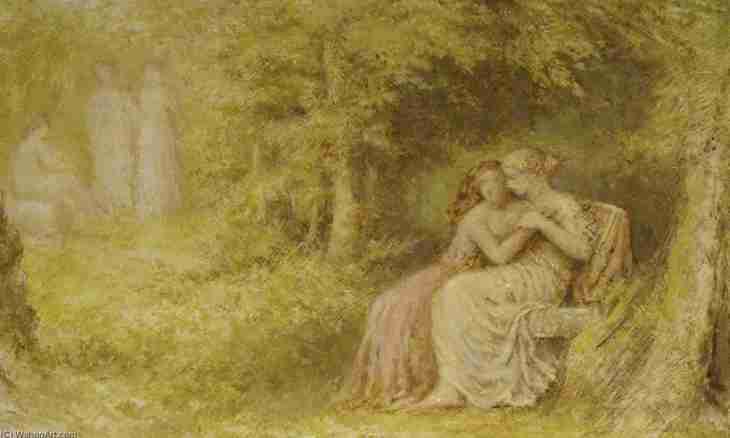Antiquity presented us a huge number of literary genres some of which, however, are not relevant any more. But their elements are used in art and still. It is possible to refer to such genres also idyll.
Originally idyll was not definition for a separate genre, and was just small simple poem on rural life. The first written samples of similar verses which reached us belong to the 3rd century BC. Quite so – "Idylls" - the collection of works Feokrita who extended in lists already about one and a half centuries later after his death was entitled. It poems on a shepherdly (bucolic) subject, at the heart of which – a meeting and a poetic competition of two shepherds. A subject for a competition was the love for the great shepherdess on a bosom of the nature, descriptions were the most sublime. Despite all refinement, such verses were not accessory of "high" poetry and were perceived as bezdelka. One of characteristics of idyll of those times, besides contents, - the "facilitated" hexameter (with an additional caesura after the fourth foot) that allowed and to recite it without special tension. Later, in I in BC Virgil, having used idyllic pictures in eclogues (separate songs) of "Bucolics", filled them already absolutely with other contents – political though the size remained the same – "facilitated".
Competition in poetic art of shepherds, under images masks which quite real people with their feelings and experiences – one of favourite plots of the Renaissance, classicism and rococo disappear. However in the Middle Ages, during an era of blossoming of courtois poetry the plot about love on a nature bosom (and, not necessarily already Platonic) was quite popular. Peresmeshniki-vaganty (vagrant poets schoolboys) rehashed in vulgar Latin idyll in own way, having enclosed quite strong expressions which also the true shepherds quite could say in lips of characters.
After a release in 1541 of the novel Arcadia Sannadzaro and in 1610 – the novel by "Astrey" of Honoré D'Urfe in Europe there came real idyllic "boom", and the noun of Seladon, the main hero of "Astrei" became common. Court recognized themselves under masks of the herdboys and shepherdesses loftily speaking about love in the shadow of willows on the bank of a stream or on a green luzhk. Practically before the great French revolution the image of the lovers holding on hands or on a leash mild lambs and talking about the feelings was popular in the European court art. Nevertheless, by the 19th century the idyll genre in literature practically came to naught in spite of the fact that usual descriptions (in verses and in prose) pleasures of peaceful rural life began to be called idyllic pictures. It was connected both with a realism part, and with decline of many European yards at which this genre was demanded.

